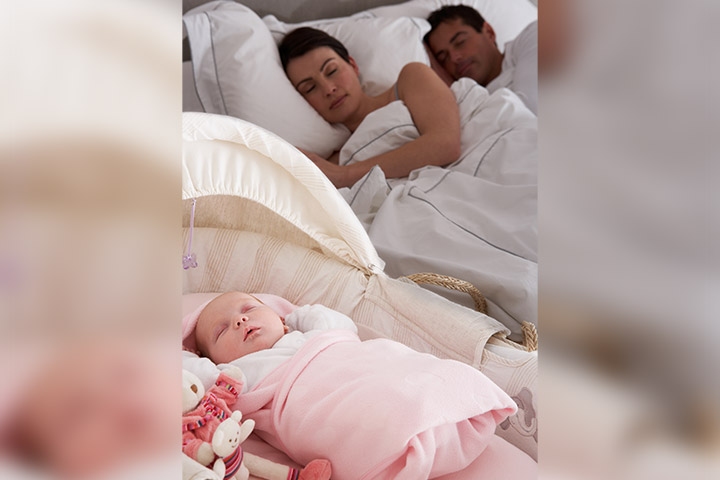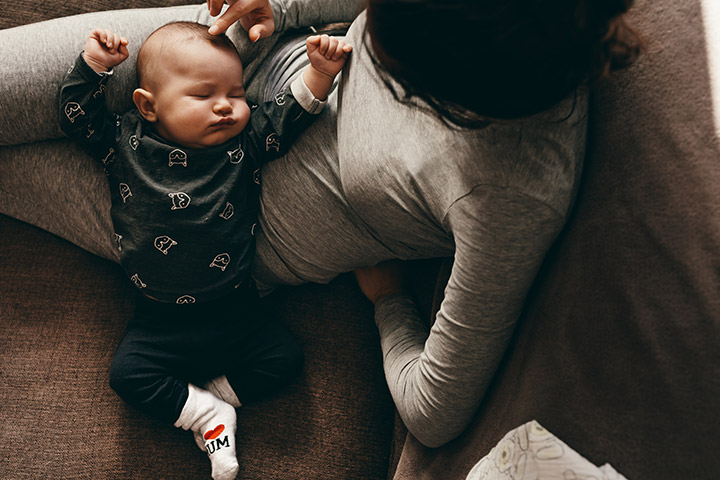
Image: iStock
When it comes to parenting, there are some things that parents have polar opposite views about. Your parenting style, for example, can be a topic where not a lot of parents will agree with the path you choose to take. You can be a tiger parent, helicopter parent, or even follow an authoritarian style of parenting, but there’s always going to be someone who tells you why they didn’t follow it. And the truth is, that’s okay! There is no hard and fast rule about how one should be as a parent, so you’re free to follow what works for you and your child. Sharing a bed with your newborn is another such topic that has opposing views.
If you believe that co-sleeping with your baby works for you, there’s nothing wrong with that. But it could be challenging when it’s time to transition them to their own bed. So, if you’re looking for tips to understand how to make that transition easy, look no further! You’ve come to the right place! Scroll below as we list down the steps to transition your co-sleeping baby to their own bed:
1. Increase The Space Between You And Your Baby
Image: Shutterstock
Start by slowly increasing the space between your child and you. Place them in a bassinet next to the bed or a bedside co-sleeper. That way, even if your child reaches out to you during their sleep, they won’t be alarmed when they do not find you near them. You are also introducing some space between you and your child, making the transition easier.
2. Bring Your Child’s Bed Into Your Room
Image: Shutterstock
Making small changes to your child’s sleeping habits can help make the transition smooth. When your baby has started sleeping next to you on a bedside co-sleeper or a bassinet for a while, you know they are ready for the next small change. Make the transition into a crib. Place your baby in a separate crib and bring it into your room. You’re helping your child make a change, but it’s a gradual one that they do not have to feel scared or uncomfortable. Your child can start sleeping on a separate bed away from you and still have you in the same room, eventually making it easier to transition.
3. Move Into Their Room
Image: Shutterstock
The next step would be to move into their room temporarily. After your child gets used to sleeping in their own crib/bed, move them into their room and move with them. This can be a huge change as they will have to get used to the new space all around. If you don’t want to move entirely into their room, you can try bunking in your kid’s room until they get used to the transition. Remember not to make your stay in their room too lengthy. The idea is to make the transition easier and not get them accustomed to having you in their room the whole time.
4. Establish A Consistent Bedtime Routine
Image: Shutterstock
Babies thrive on routine. They adapt to change well if there is a consistent routine in place. Therefore, ensure your child has a set bedtime. Also, establish a bedtime routine so your child knows when it’s time for them to sleep. You can start by giving them a warm bath and changing them into comfortable pajamas. Next, brush their teeth and moisturize their face, hands, and legs. Put them to sleep and dim the lights. You can leave a small night light on in the room, so your child is comfortable. Once you’ve established a nighttime routine and decided on a standard bedtime, your work to put your kid to sleep becomes a lot easier.
5. Let Your Child Get Familiar With Their New Space
Image: Shutterstock
For most of us, the bedroom is our safe haven. Make it your child’s space too. Spend a lot of awake time with them in their room and allow them to build a bond with it. Feed them in it and let them play with their toys in their room. Use their rooms for activities like reading, playing, and eating, apart from just sleeping. Once your child gets familiar with their new space, they would happily enjoy sleeping in it.
6. Try It For Naptime
Image: Shutterstock
Try using the room for naptime before your child starts sleeping there all night. Kids nap at least two to three times a day, even when they are older. So, when your child begins to nap in their own space, sleeping there at night becomes less of a hassle. Make the transition easier so that they are comfortable sleeping in their room without worrying too much.
Change is not easy to accept. It takes time and patience to get familiar with something new, and as a parent, it’s up to you to make that transition smooth for your baby. There might be some tears, discomfort, and tantrums when you start making the transition but hold on because it will get better! How did you transition your co-sleeping baby to their own bed? What issues did you face, and how did you overcome them? Comment below and let us know!


















